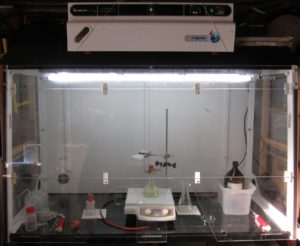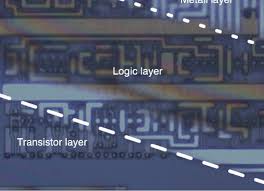Clone Microcontroller ATmega164PA Program
Clone Microcontroller ATmega164PA Program have to extract the content from its flash and eeprom memory first, and the status of MCU will be unlock and reset to open one;
The interrupt execution response for all the enabled AVR interrupts is four clock cycles minimum. After the four clock cycles the program vector address for the actual interrupt handling routine is executed.
During this 4-clock-cycle period, the Program Counter (9 bits) is pushed onto the Stack. The vector is often a relative jump to the interrupt routine, and this jump takes two clock cycles.
If an interrupt occurs during execution of a multi cycle instruction, this instruction is completed before the interrupt is served. If an interrupt occurs when the MCU is in Sleep mode, the interrupt execution response time is increased by four clock cycles which can manipulated by Microcontroller code copying.
A return from an interrupt handling routine takes four clock cycles. During these four clock cycles, the Program Counter (9 bits) is popped back from the Stack. When AVR exits from an interrupt, it will always return to the main program and execute one more instruction before any pending interrupt is served.
· Bit 7 – Res: Reserved Bit
This bit is a reserved bit in the atmega164pa and always reads as zero.
· Bit 6 – INT0: External Interrupt Request 0 Enable
When the INT0 bit is set (one) and the I-bit in the Status Register (SREG) is set (one), the external pin interrupt is activated.
The Interrupt Sense Control0 bits 1/0 (ISC01 and ISC00) in the MCU general Control Register (MCUCR) define whether the external interrupt is activated on rising or falling edge, on pin change, or low level of the INT0 pin.
Activity on the pin will cause an interrupt request even if INT0 is configured as an output. The corresponding interrupt of External Interrupt Request 0 is executed from program memory address $001. See also “External Interrupts.”
· Bit 5 – PCIE: Pin Change Interrupt Enable
When the PCIE bit is set (one) and the I-bit in the Status Register (SREG) is set (one), the interrupt on pin change is enabled. Any change on any input or I/O pin will cause an interrupt.
The corresponding interrupt of Pin Change Interrupt Request is executed from program memory address $002. See also “Pin Change Interrupt.”
· Bits 4..0 – Res: Reserved Bits
These bits are reserved bits in the atmega164pa and always read as zero.
· Bit 6 – INTF0: External Interrupt Flag0
When an edge or logic change on the INT0 pin triggers an interrupt request, INTF0 becomes set (one). If the I-bit in SREG and the INT0 bit in GIMSK are set (one), the MCU will jump to the interrupt vector at address $001.
The flag is cleared when the interrupt routine is executed. Alternatively, the flag can be cleared by writing a logical “1” to it. The flag is always cleared when INT0 is configured as level interrupt.
· Bit 5 – PCIF: Pin Change Interrupt Flag
When an event on any input or I/O pin triggers an interrupt request, PCIF becomes set (one). If the I-bit in SREG and the PCIE bit in GIMSK are set (one), the MCU will jump to the interrupt vector at address $002.
The flag is cleared when the interrupt routine is executed. Alternatively, the flag can be cleared by writing a logical “1” to it.
· Bits 4..0 – Res: Reserved Bits
These bits are reserved bits in the atmega164pa and always read as zero.
Tags: clone microcontroller dump archive,clone microcontroller dump bin,clone microcontroller dump code,clone microcontroller dump content,clone microcontroller dump data,clone microcontroller dump eeprom,clone microcontroller dump file,clone microcontroller dump firmware,clone microcontroller dump hex,clone microcontroller dump information,clone microcontroller dump memory,clone microcontroller dump program



